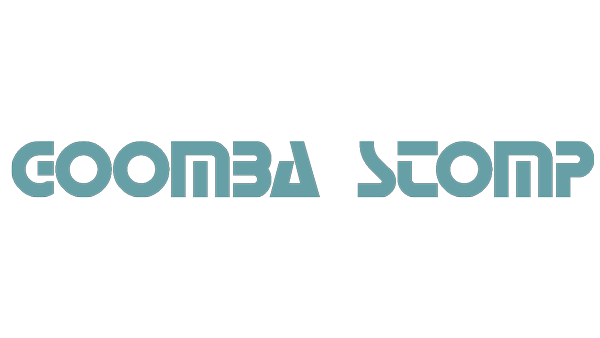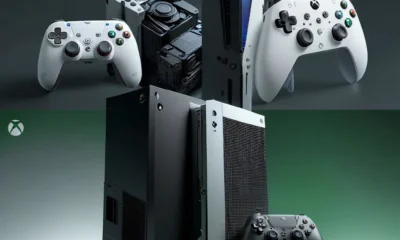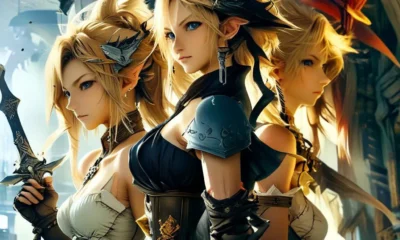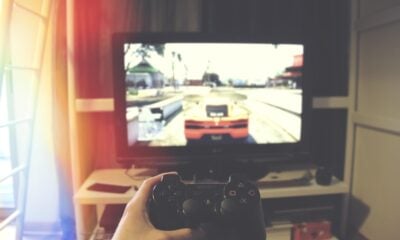Features
At Ten Years Old, ‘Super Mario Galaxy’ Remains Stellar
On November 12th, 2007, Super Mario Galaxy was released in North America for the Nintendo Wii. At the time of its release, it was the first 3D Mario game since Super Mario Sunshine (as well as the third overall in the series). Its vast setting and fluid mechanics are bound with a spectacular orchestral score, making this delightful platformer a classic that reinvigorated the Super Mario series.
Growing A Galaxy
The initial roots of Galaxy can be found in Super Mario 128, a series of development projects by Nintendo originally intended to become a direct sequel to Super Mario 64. Unveiled at SpaceWorld 2000, a game trade show hosted by Nintendo, 128 was meant to give the audience a sense of the GameCube’s processing power. Though never realized into a full game, many of its core concepts were integrated into several other Nintendo games, including the “sphere-walking” of The Legend of Zelda: Twilight Princess and the rapid object generation of Pikmin. The demonstration’s director, Yoshikai Koizumi, wanted the use of spherical platforms to be the distinguishing feature in a future Mario game, but not for the Nintendo GameCube due to doubts regarding the console’s technical capabilities. In 128, the platforms themselves were actually more akin to flying saucers, and converting them to spheres that could be freely navigated would require a high level of technical capability – which Koizumi wasn’t sure would be worth the effort.
The ‘Super Mario 128’ tech demo was shown at SpaceWorld 2000. This was the same event that Nintendo revealed other titles such as ‘Luigi’s Mansion’ and ‘Super Smash Bros. Melee’.Despite this, Super Mario creator Shigeru Miyamoto continued to encourage the creation of a major game based on the idea. After several months of building a prototype physics system with spherical platforms, the developers intuitively decided to make the game set in an outer space environment where the player could transverse many minor planets. After several years of considerable effort, Super Mario Galaxy was born, released in Japan on November 1, 2007, and in North America on November 12th.
Though other games have featured exploration of minor planets, Super Mario Galaxy’s unique and intricately crafted physics engine allows the player to completely and flawlessly circumnavigate them. This novel foundation allowed the development team to experiment with ideas that would have been difficult to integrate into other Super Mario games (such as entire planets shaped like fruit and ice cream). Combat presented another challenge: it was assumed that Mario’s standard jump would be difficult to use on spherical platforms, so his primary means of attack was changed into a spin. Originally meant for the Nunchuck’s joystick, it was changed to respond to shaking the controller once motion sensing was confirmed for the Wii remote. Elements like these were implemented in the hopes that the player would enjoy simply playing the game itself rather than only seeking to complete it.
The Soundtrack
Oddly enough, the music for Galaxy was originally Latin American in style. Originally, lead music director Mahito Yokota had composed more than two dozen tracks using Latin American instruments – such as steel drums and congas – with synth sounds in hopes that it would be reminiscent of old sci-fi films. The game’s sound supervisor, Koji Kondo, so fervently rejected the composition that Yokota nearly resigned from his post. Thankfully, the two reconciled, leading Kondo and Yokota to create an original soundtrack together from scratch. Beginning with Miyamoto’s statement that an orchestral motif would sound the most “space-like,” the duo composed a total of 28 songs performed by a 50-person symphony orchestra.
The original album art for the ‘Super Mario Galaxy’ soundtrack. This marked the first time an orchestral score was used in any Mario game.In response to concerns that the soundtrack would not fit the rhythm of a Mario game, sound director Masafumi Kawamura worked to synchronize the musical instrument digital interface (MIDI) data with the game’s streaming data – not unlike the synchronization techniques used in Wind Waker and Donkey Kong Jungle Beat. In order to further ensure the sound could remain in tandem with the gameplay, the audio team requested that the orchestra perform at several varying tempos.
The result was spectacular. Super Mario Galaxy’s soundtrack received an outpouring of praise from critics: Matt Hegelson of GameInformer remarked that it was “beautifully composed,” while GamesRadar labeled it a “generous helping of some of the finest orchestral bombast ever heard in a game.” Matt Cassamina of IGN wrote that the score was “absolutely superb –– some of the best in any Nintendo game to date” and served as a brilliant complement to the platforming.
The Legacy
Super Mario Galaxy received near-universal acclaim on release, winning ‘Game of the Year’ awards from IGN, GameSpot, Nintendo Power, Kotaku, and the British Academy of Film and Television Arts (BAFTA). The title boasts a 97 on Metacritic, making Galaxy the sixth highest rated video game on the site. Even after a decade, it’s still enjoyed today – as of September 30, 2017, 12.76 million copies of the game have been sold, making Galaxy the third best selling Wii game (excluding games bundled with the console) and the ninth best overall.
In essence, perhaps what made Galaxy so lovely is that it introduced so many new mechanics while simultaneously retaining the cheerful familiarity of the older Super Mario games. Thankfully, it will be remembered as such.

-

 Features4 weeks ago
Features4 weeks agoDon’t Watch These 5 Fantasy Anime… Unless You Want to Be Obsessed
-

 Culture4 weeks ago
Culture4 weeks agoMultiplayer Online Gaming Communities Connect Players Across International Borders
-

 Features4 weeks ago
Features4 weeks ago“Even if it’s used a little, it’s fine”: Demon Slayer Star Shrugs Off AI Threat
-

 Features2 weeks ago
Features2 weeks agoBest Cross-Platform Games for PC, PS5, Xbox, and Switch
-

 Game Reviews4 weeks ago
Game Reviews4 weeks agoHow Overcooked! 2 Made Ruining Friendships Fun
-

 Features2 weeks ago
Features2 weeks agoThe End Is Near! Demon Slayer’s Final Arc Trailer Hints at a Battle of Legends
-

 Features3 weeks ago
Features3 weeks ago8 Video Games That Gradually Get Harder
-

 Features1 day ago
Features1 day agoPopular Webtoon Wind Breaker Accused of Plagiarism, Fans Can’t Believe It!
-

 Features3 weeks ago
Features3 weeks agoDon’t Miss This: Tokyo Revengers’ ‘Three Titans’ Arc Is What Fans Have Waited For!
-

 Game Reviews2 weeks ago
Game Reviews2 weeks agoFinal Fantasy VII Rebirth Review: A Worthy Successor?
-

 Game Reviews4 weeks ago
Game Reviews4 weeks agoHow Persona 5 Royal Critiques the Cult of Success
-

 Guides3 weeks ago
Guides3 weeks agoHow to buy games on Steam without a credit card























